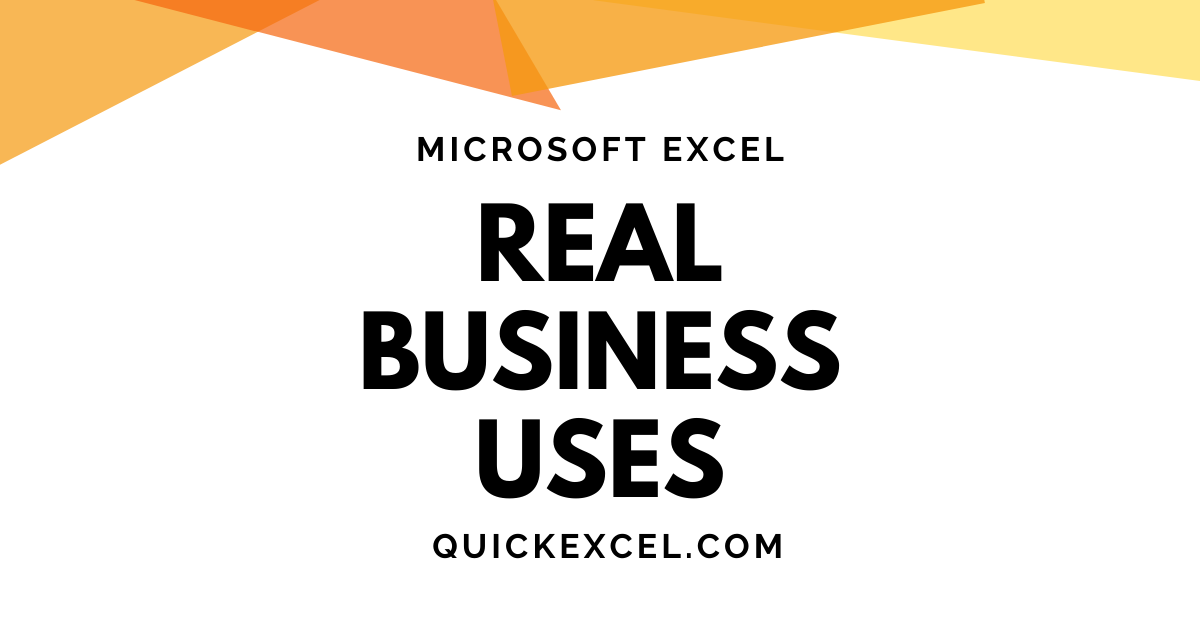Microsoft Excel is one of the most useful and intelligent, yet the most underestimated data analysis software in the business industry. The potential and capacities of this smart analysis program are extremely undervalued by the common man.
By the end of this article, you will have understood the various significant use cases and applications of this data analytics software by Microsoft.
Top business uses of Microsoft Excel
Today we are going to elucidate on the implementation and application of Microsoft Excel in the real business world.
1. Data analysis
Excel has been far-reaching in business and data analysis. Highly advantageous data analysis reports and summaries can be generated using this application. Users and business analysts can use Pivot Tables to create systematic and manageable summaries of important metrics.
For example, managing a database in pivot tables helps the analysts to divide data into segments and analyze the data systematically by applying filters and custom sorting features to it.
2. Graphical and visual representation of reports
Excel is not any software that is used by students to solve their homework or used by common people to rearrange the data into ascending or descending order. It is more than any of it.
Excel’s fully customizable and integrative interface allows users to insert stunning pie charts, bar charts, dashboards, map charts, smart arts, word arts, text boxes, icons, images, backgrounds, and tables, and more to be able to easily represent their data beautifully and systematically.
3. Predictive analysis and forecasting
Forecasting is a crucial aspect of data analysis and is vital for successful business success. Excel has not left any stone unturned. Users can easily predict the future values for their data in Excel using forecast formulas.
Forecasting and predictive analysis are core activities in machine learning, data mining, predictive modeling, and several other statistical techniques that involve predicting unknown future values.
4. Financial accounting and budgeting
Microsoft Excel is extensively utilized in creating financial budgets and managing crucial financial accounts in the corporate world. Excel has enabled organizations to achieve ideal project management goals and meet customer demands with high satisfaction at once.
Crucial formulas like FORECAST, SUM, SUMIF, SUMIFS, AVERAGE, FUTURE VALUE, PRESENT VALUE, and database functions like DMIN, DMAX, DAVERAGE, etc. have been very helpful in the corporate world.
5. User data management and storage
With Microsoft Excel, users can create attractive user data entry forms, employee performance KPI dashboards, user databases, and many other user data management systems.
Read here: Create a fully automated user data entry form without VBA coding
With a plethora of pragmatic formulas and tools in the application, users can create fully automated data systems in Excel.
6. Administrative business data
Microsoft Excel is used to create, manage, and process purposeful data systems like CRM, MIS, database, etc.
All these tabular data structures can be represented visually using a variety of charts and tables. The numerical data can be easily formatted, segmented, and consolidated in Excel.
Users can use crucial tools like Goal seek, Scenario manager, and Data Table for high-level data forecasting, interpretation, and preparation.
7. Personal financial data management
Ordinary individuals can use Microsoft Excel in their day-to-day life to calculate their monthly expenses and create a budget to manage their household effectively.
Anybody can use this application to execute ordinary tasks like mathematical calculations, arranging the data in ascending or descending order, lowest to highest, apply conditional formatting to filter data in a better way, and more.
8. VBA Coding and development
Microsoft Excel is extensively used by coders and developers with VBA coding knowledge who take the software to a whole new level. With VBA, users can create functional buttons, record macros with code, minimizing the use of formulas in reports, automate data, and protect workbooks and sheets.
Macros are vital to performing repetitive tasks and saving time behind repeatedly creating identically structured data reports. Excel has proved to be one of the most useful data management and analysis software in the business world.
Conclusion
This piece was all about the important use cases and applications of Microsoft Excel in the real business world. Microsoft Excel is one of the most useful and intelligent, yet the most underestimated data analysis software in the business industry.
